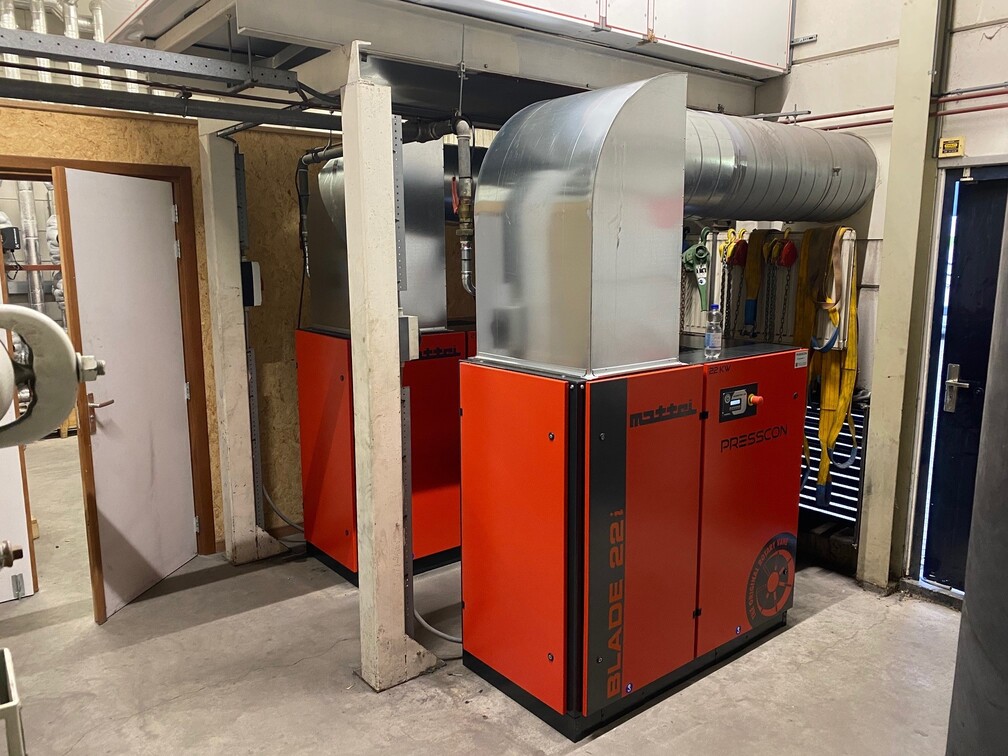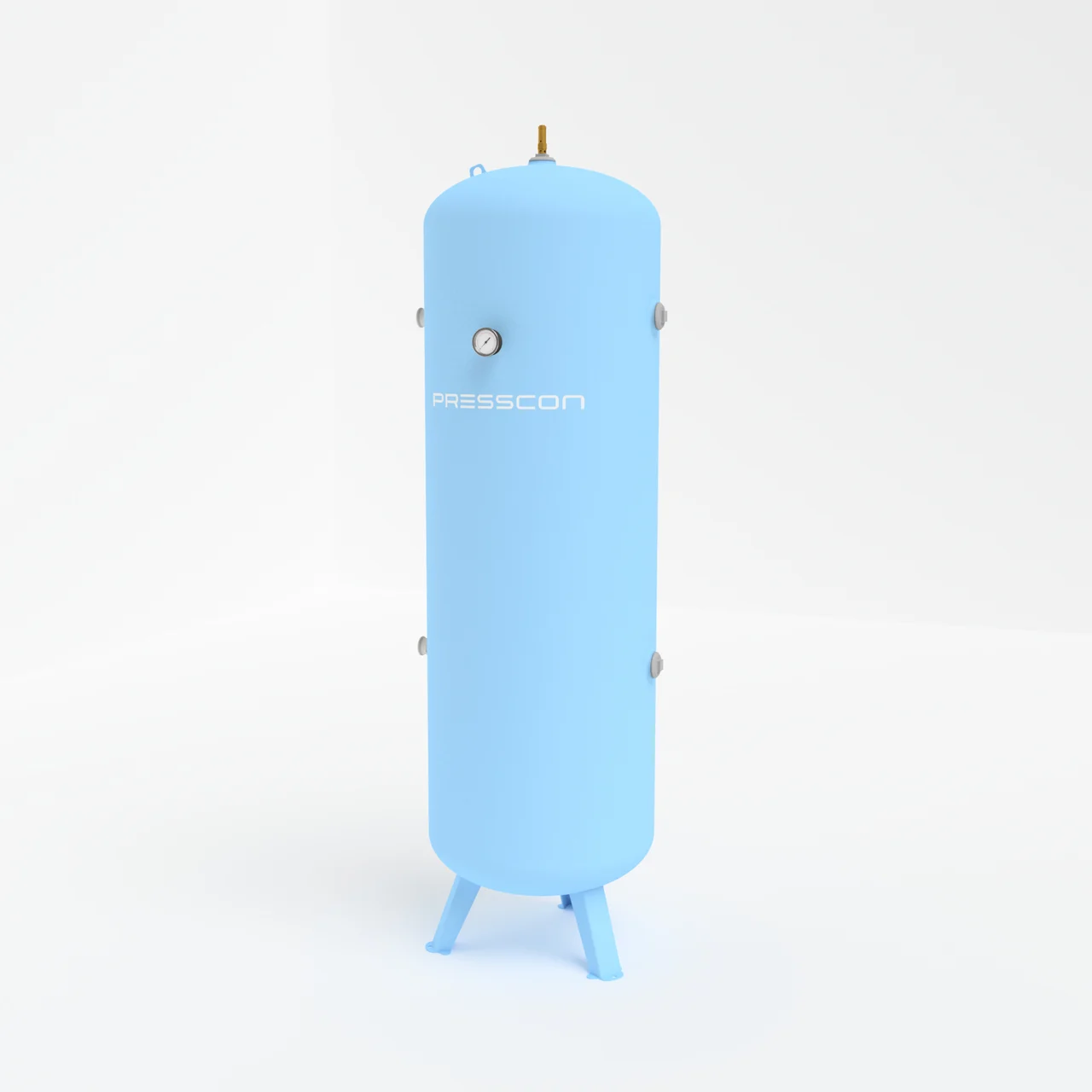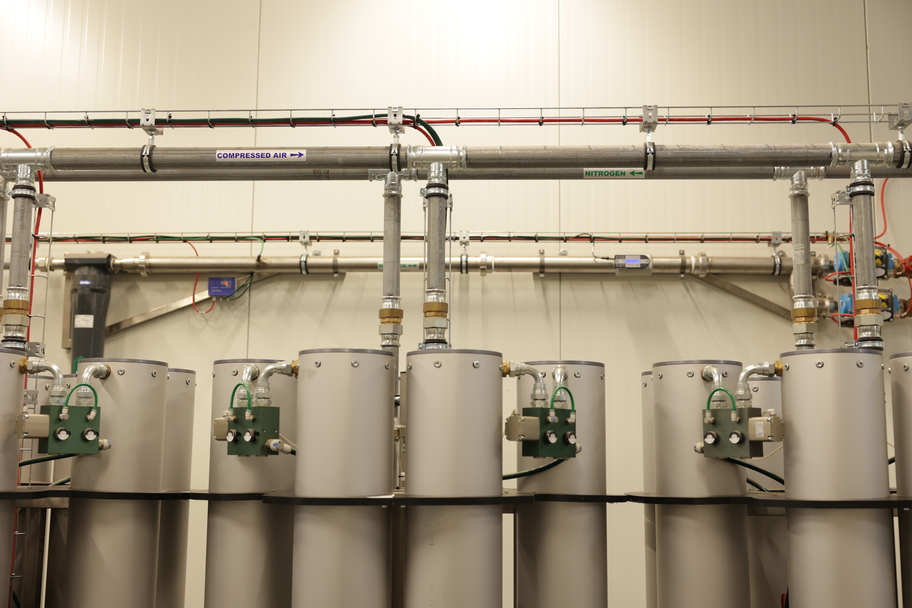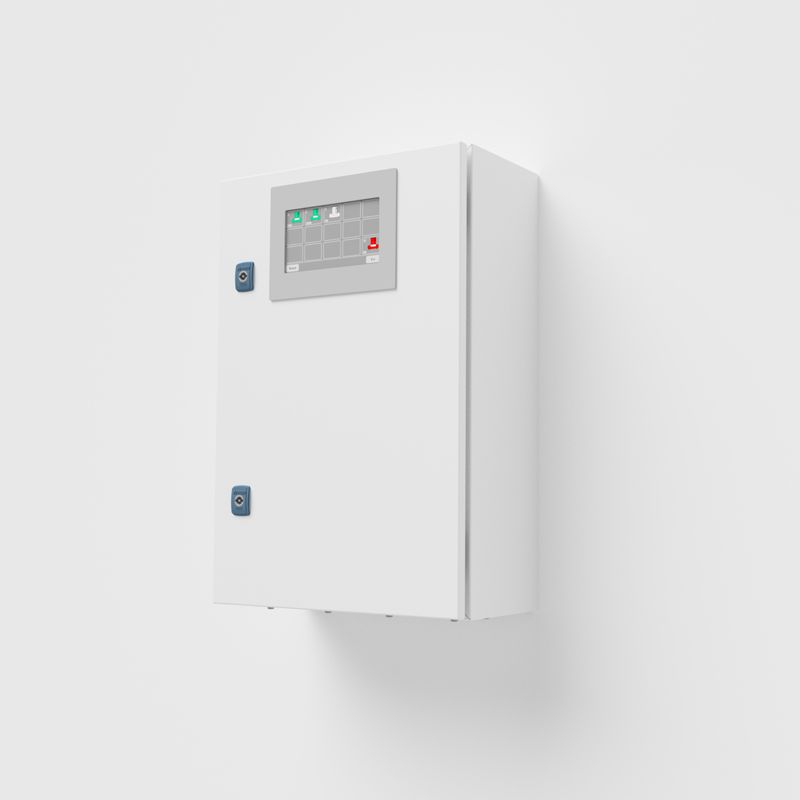Compressed Air
Blog
People frequently ask: What is compressed air? Compressed air plays an important role in numerous applications, from industrial production to hospital use. In this blog, we explain what compressed air is, how it is used, and how a well-designed compressed air system can contribute to energy savings, reliability and safety.
What is compressed air?
Compressed air is air that has been pressurized to a higher pressure using a compressor. It is literally compressed ambient air that is compressed to a smaller volume. In this process, gases such as oxygen and nitrogen increase in kinetic energy, which can then be stored in cylinders or tanks. This air originally has atmospheric pressure but is compressed to several bars via compression.
This form of energy is relatively safe and can easily be used to power machines, tools and processes. Because it has no risks of sparking like electricity, it is particularly suitable for construction sites and humid environments.
Why is compressed air used as an energy source
- Safety in explosive environments or high humidity
- Flexible use in production environments such as for inflating tires, powering machines and creating movement in industrial processes.
- Easy control and fast execution
How does compressed air technology work?
The process begins by drawing in ambient air, which under normal conditions has atmospheric pressure. This air naturally contains contaminants such as dust particles, water vapor and sometimes oil residues. A good inlet filter removes most of these contaminants before the air reaches the compressor. This protects the system, extends its life and increases the quality of compressed air.
Once filtered, the air is drawn into the compressor, where it is compressed under high pressure. Depending on the type of compressor, the temperature also rises significantly during this process. Since warm air can contain more moisture, it is crucial that this excess moisture is removed. Therefore, after compression, the compressed air is first passed through an aftercooler. In this, the moisture condenses to water, which is then removed via a condensate separator or an automatic drain valve. However, residual moisture, oil or contaminants may still remain after this step. Therefore, the air is further treated with an air dryer. Depending on the application, this can be a:
- Cooling dryer: it cools the air to about 3°C, condensing most of the moisture.
- Adsorption dryer: it removes almost all the moisture from the air (for very dry air, for example in laboratories or food industry).
The dry, clean and cooled compressed air is stored in a pressure vessel (compressed air receiver). This vessel serves as a buffer so that you always have sufficient pressure available, even if the compressor is temporarily not running. The compressed air is distributed to workstations or machines via a piping system with solid couplings, piping made of aluminum, for example, and well-mounted components.
Different compressors and compression techniques
A variety of compressors and compression technologies are available. Compressors range from small, portable units to large, industrial systems. Choosing the right compressor is crucial to process efficiency and reliability. We therefore work with compressors from well-known brands such as: Mattei, Airpress, ALUP and Kaeser.
The most common different compression techniques are:
- Piston compressors: These work by compressing air in a cylinder using a piston. They are simple in design and maintenance, but can be noisy.
- Screw compressors: These use two screws to compress air. They are more efficient and quieter than piston compressors and are often used in continuous production processes.
- Vane compressors: These use rotating baffles in a cylindrical housing to compress air. They are compact, reliable and have uniform air output. They also require relatively little maintenance because they have fewer moving parts. Vane compressors are often used in applications where constant pressure is required.




The energy consumption of compressed air compressors
An important aspect of compressed air is energy consumption. Although compressed air is versatile and useful, its production can consume a lot of energy. Compressors are known to be responsible for a significant portion of energy consumption in industrial environments. Therefore, it is essential to keep energy efficiency in mind when designing and operating compressed air systems.
We advise our customers to invest in modern, energy-efficient compressors and to perform regular maintenance to minimize energy consumption. This helps reduce operating costs. Check out our compressor control system here.
ISO 8573-1: the standard for quality compressed air
Compressed air quality refers to the degree of purity of the air after compression. Here, it looks primarily at three contaminants:
- Solid particles (dust, rust, wear particles from pipes)
- Water (in the form of moisture or condensation)
- Oil (vapor or liquid, often from oil-lubricated compressors)
The combination of these factors determines whether the air is “suitable” for your application.
The international standard ISO 8573-1 classifies compressed air based on three categories. The lower the number, the higher the quality:
Quality Class | Solid particles (µm) | Dew point (°C) | Oil (mg/m³) |
|---|---|---|---|
Class 1 | ≤ 0.1 µm | ≤ -70 °C | ≤ 0,01 |
Class 2 | ≤ 1 µm | ≤ -40 °C | ≤ 0,1 |
Class 3 | ≤ 5 µm | ≤ -20 °C | ≤ 1,0 |
Class 4 | ≤ 15 µm | ≤ +3 °C | ≤ 5,0 |
Class 5 | ≤ 40 µm | ≤ +7 °C | – |
What quality of compressed air do you need?
Application | Recommended ISO class |
|---|---|
Pneumatic tools (workshop) | 5.4.4 |
Paint spraying (paint booth) | 2.4.2 or better |
Food Industry | 1.2.1 (oil-free!) |
Medical breathing air | 1.2.1 |
Electronics manufacturing | 1.2.1 |
Where is compressed air used?
We see compressed air being used in a variety of industries. It is an indispensable resource in industrial processes, where it is used to drive machinery, move products and even to run tools.
Here are some other examples:
- Pneumatic tools: These tools, powered by compressed air, are widely used in construction, automotive and maintenance work. They are popular because of their reliability and the fact that they are relatively safe to use, especially in environments with wet floors or high humidity.
- Medicinal air: In the medical sector, such as hospitals, high quality compressed air is used in ventilators and other life-saving applications. Medicinal air must meet strict quality standards since patients’ health depends on it.
- Packing and conveying: In many different industries, such as the food industry, compressed air helps pack and transport products without the risk of contamination.
- Simple logical circuits: Compressed air is also used in control systems, where it helps execute simple logic circuits that control machines and devices.
- Nitrogen generator: Nitrogen generators can generate nitrogen through compressed air.
Grip on compressed air consumption with the PEC Controller
The PEC Controller is an in-house development of Presscon. The PEC Controller is a control system for controlling one or more compressors in a compressor fleet. It is a control module that we place in a compressor and have it communicate with the machine via digital and analog signals. The controller controls compressors so that the flow generated exactly matches the flow requested, keeping pressure stable. That precise matching minimizes kickback, overpressure and unnecessary consumption costs. As a result, the PEC Controller knows the status of the compressor and can control it in a targeted manner.
The PEC Controller is suitable for a variety of compressor configurations:
- Frequency-driven models (VFD).
- Multiple speed stages
- Fixed-speed switching systems
- Also with varying brands and capacities
With more than 25 years of experience, Presscon builds modular and scalable compressed air systems. This makes the compressors, controllers and the PEC module easy to expand or upgrade as your needs change. Moreover, all systems are completely designed and manufactured in our factory in Honselersdijk, including compressor control solutions and pressure vessels. By investing in the right equipment and maintaining your systems properly, you can not only increase efficiency, but also reduce costs and improve safety. Compressed air is a powerful energy source, and we make sure you get the most out of it.
Frequently Asked Questions
What is the difference between compressed air and gas?
Compressed air is compressed ambient air, while gas is usually a specific chemical element.
How often should I service my compressor?
Regular maintenance is necessary to prevent leaks, malfunctions and loss of quality compressed air.
What does a compressed air system cost on average?
This depends on the power required, the desired quality, and the complexity of the implementation.
